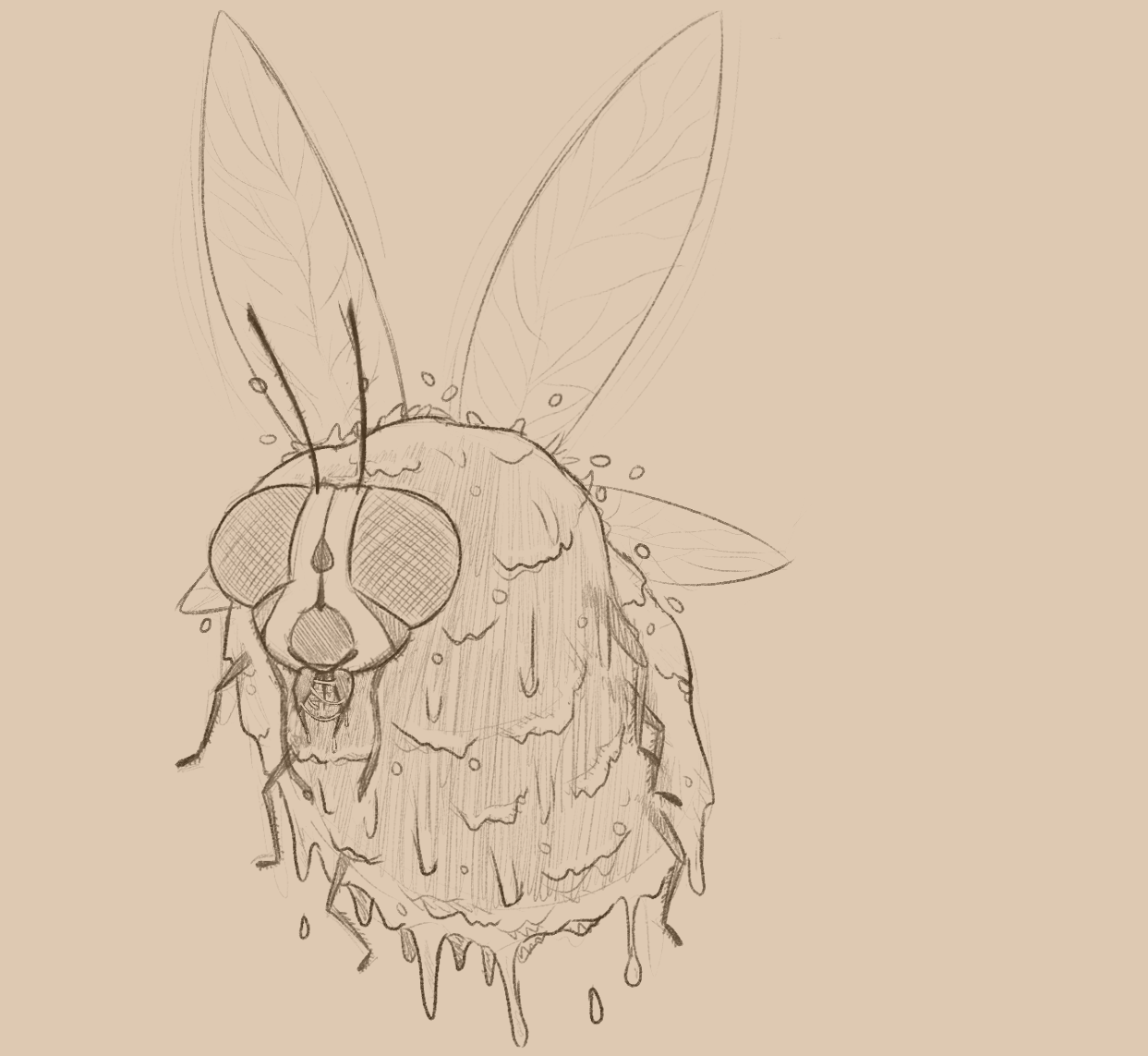Ranasca
A insect without a chitin shell whose skin secrets a nerve poison which, in large quantities, can cause hallucinations.
The body is a moist, bulky, dripping mass of disgust.
His head is also unshapely, has a snout which he uses for bloodsucking and two, close to each other, feelers.
Its wings are slightly larger than the body and are located further up.
Its legs are almost useless, they are small and are pushed apart by the body, the only benefit is to support the body when landing so that it does not collapse under its own weight.
Its hunting tactics are simple: It sits on a living being, mostly smaller rodents, whereby its body adapts disgustingly to that of the victim.
Thereupon the permanently escaping nerve poison anaesthetizes the victim whereby the insect has the possibility to suck the blood.
Basic Information
Anatomy
The body of this insect is not surrounded by chitin; instead, it is surrounded by a membrane that continuously releases mucilaginous nerve poison.
It has four wings, two bigger than the rest. By flapping these wings, the leaking nerve poison is often also distributed near the ranasca.
The Ranasca are equipped with sharp bite tools, which they use to eat paralyzed prey.
Biological Traits
The nerve poison of females is often stronger than that of males.
Nevertheless, males live about one week longer than females.
Genetics and Reproduction
The Ranasca females secretes round about 20 eggs over the course of a month, which emerge from the membrane similar to the toxin.
These slimy eggs secrete a strong pheromone, which attracts males who then cover the eggs with their own toxin and fertilize them.
The young animals hatch a week later and only need a few days to become sexually mature and to start the circle anew.
Growth Rate & Stages
Ranasca live about two weeks after hatching.
The older a ranasca is, the stronger the poison escaping from it.
Ecology and Habitats
Ranasca live in dense forests of the milder areas and are, outside the mating season, loners.
Dietary Needs and Habits
They feed on the blood of small mammals and dragons, but are not afraid to feed on other sleeping animals.
They hunt by sitting on a potential victim, whereupon the nerve poison paralyses the prey animal.
When the prey is now completely shut down, the Ranasca bites it and begins to suck the blood and eat smaller fragments of flesh.
It is very likely that smaller animals will not survive this procedure.
Particularly in the high time of the Aesta Ranasca are considered as plague, since they go at night into dwellings, sit on humanoids and leave a depth, usually slowly healing wound.
Additional Information
Uses, Products & Exploitation
Alchemists and doctors use the poison of Ranasca for tinctures.
Geographic Origin and Distribution
Forests in mild regions.
Perception and Sensory Capabilities
The Ranasca use their feelers to detect odours and thus also pheromones. However, the large eyes are mainly used for orientation.
Lifespan
2-3 Weeks
Average Height
3-5 cm
Average Weight
10 g
Body Tint, Colouring and Marking
Yellowy Red


Comments